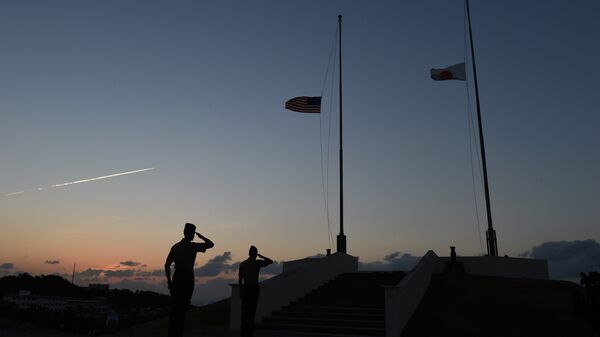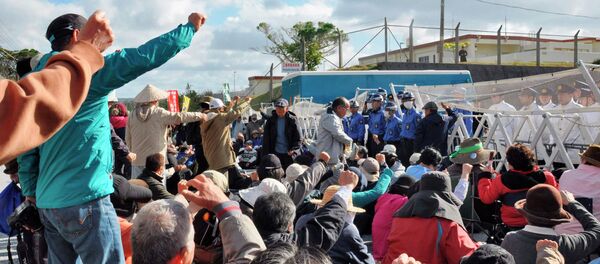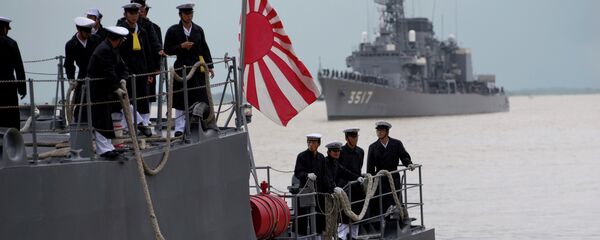Onaga became governor in December on a platform to put a stop to plans to build a replacement facility for the U.S. Marine Corps' base, which is currently at Futenma Air Station in Ginowan City. The plan to move the base to the less populated Henoko District, in the coastal area of Nago, Okinawa, was approved by Onaga's predecessor but has raised fierce opposition from local residents in Okinawa.
Around 26,000 US military personnel are based in Okinawa, the country's southernmost prefecture, and where 74 percent of the total land of US military facilities in Japan is located. Governor Onaga told Suga on Sunday that the prefecture "never voluntarily offered [land] for bases," and that the burden should be spread throughout Japan, rather than relocating the base to another location in Okinawa.
"You say we should shoulder [the burden of the base] because [Futenma] is the most dangerous [one] in the world and its risks need to be eliminated, all the while causing the people of this prefecture great pain," said Onaga.
On Sunday, demonstrators staged a protest outside the hotel where Governor Takeshi Onaga and Chief Cabinet Secretary Yoshihide Suga were holding their talks; the demonstration was attended by an estimated 1,500 people. Local media reported isolated clashes with police at the protest, at which local residents of Okinawa sought to express their opposition to the building of new bases in the area, which bears the greatest burden of US personnel stationed in Japan under the terms of the 1951 Security Treaty with the US.
The closing of the base at Futenma and the construction of a facility in a new location 50 kilometers away was first planned in 1996, as a response to outrage after the gang-rape in 1995 of a 12 year-old-girl by US troops stationed at the base. However, the central government's plans to move the base have been repeatedly blocked by local residents due to the crime risk posed by US servicemen stationed there.
In 2008 US secretary of state Condoleezza Rice apologized for a series of crimes committed by US servicemen stationed at the base, including allegations of drink-driving, robbery and rape. In March, 2013, two US servicemen were sentenced by a court in Okinawa to ten and nine years each in prison for the rape and robbery of a woman in a parking lot.






